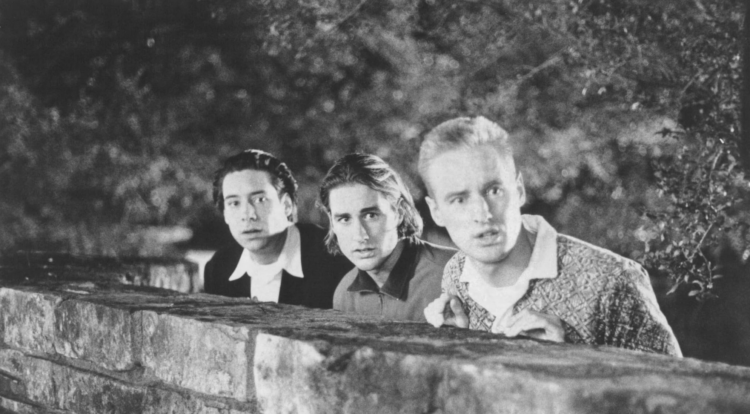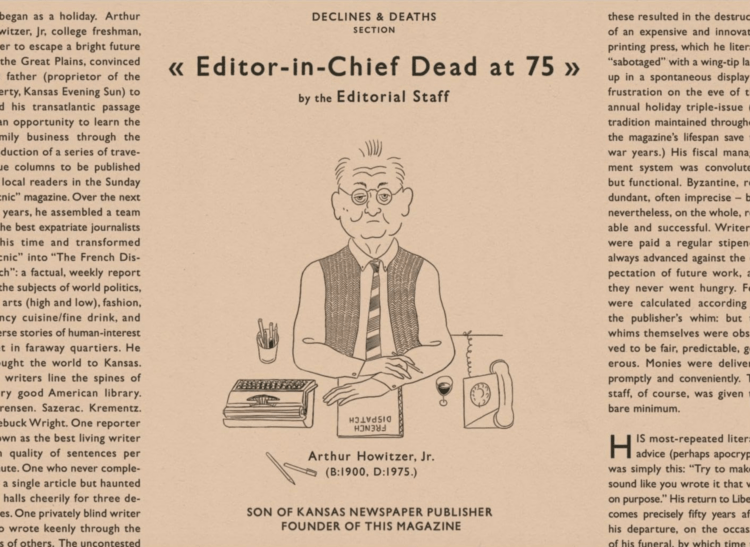
Step into the eccentric world of Wes Anderson. The eclectic writer/director known for his unique color palette and aesthetic stylization, is about to release a series of short films based on Rahl Dahl’s stories. These shorts premiere on Netflix beginning on Sept. 27 with, “The Wonderful Story of Henry Sugar” and ending on Sept. 30 with “Poison.”
In honor of these new short films, I am giving every one of his feature films a (nonsense) award in the style of the awards given out in Anderson’s most recent feature “Asteroid City” (2023). Ranking the films would be easier but that wouldn’t be in the spirit of Wes Anderson’s work.

Starting with his debut, Anderson’s “Bottle Rocket” (1996) wins the Participant Badge.
The film is fine. It’s a participant. Unlike his other films, “Bottle Rocket” is strangely normal, with a very basic plot that doesn’t feel like a part of the same universe as his other films. The film follows Anthony (Luke Wilson) who is freshly released from a mental hospital and commits a poorly planned crime spree with his strange friend Dignan (Owen Wilson). It’s better than most debut directorial films, but overall just a little basic. It does, however, still have an overtone of sadness that appears to be a feature of every Anderson film.

Up next is “Rushmore” (1998) winning the Sleeper-Hit of the Century Sash.
Yes, the awards are all alliterative.
This film feels like a love letter to coming of age, and it’s absolutely phenomenal. “Rushmore” marks the beginning of the Wes Anderson montage, a staple in his films, that consists of characters centered in the frame holding still as if to replicate a photo. This film is surprisingly one of the best Anderson films and continues to be one of my favorites after having watched and rewatched every single film. It follows a high schooler named Max (Jason Schwartzman) who gets thrown out of his beloved private school after several shenanigans, but not before falling in love with a teacher (Olivia Williams) and befriending a fellow student’s father (Bill Murray). “Rushmore” really plays into the joy of being an odd kid. This film feels like a love letter to coming of age, and it’s absolutely phenomenal.

Anderson’s third film “The Royal Tenenbaums” (2001) wins the Diamond of Dysfunctional Families.
This is a hard award to win given the vast number of dysfunctional families in his body of work. The film is the first to establish the large cast of recognizable actors that can be found in any proceeding Anderson film. “The Royal Tenenbaums” follows Royal Tenenbaum (Gene Hackman) as he tries to make amends with his family after spending years horribly mistreating them. In this film, the Tenenbaums are so dysfunctional that they manage to feel unlike a family at all, and more like a group of people living together by chance. This dysfunction causes an overwhelming numbness as if the film itself is depressed and unable to comprehend what’s happened to itself.

“The Life Aquatic with Steve Zissou” (2004), our fourth film, wins the Brass Bell of Bad Decisions
Boat people love bells.
This film is the first to really establish Anderson’s use of vivid signature colors. The film follows Steve Zissou (Bill Murray) an oceanographer and documentarian who seeks vengeance on a shark that killed one of his crew mates. Being his worst-rated film, “The Life Aquatic with Steve Zissou” is poorly received by Anderson’s fans, and not without reason. This film has some of the worst pacing of any of Anderson’s films, as well as a lack of depth in each of its characters. “The Life Aquatic with Steve Zissou” doesn’t manage to get past surface level in terms of a deeper meaning. But, the film still has a lot to offer, continuing the trends of darker themes, poor family relationships, beautiful cinematography, and an added dose of very poor decision-making.

The goth feature film, “The Darjeeling Limited” (2007), wins the coveted Plaque of Pain.
This film is one devastation after another, with every moment of rest followed by a worse pain around the corner. “The Darjeeling Limited” sees brothers Francis (Owen Wilson), Jack (Jason Schwartzman), and Peter (Adrian Brody) who embark on a journey of self-discovery across India. The film is hard to watch, as it predates the later established bittersweet feeling in Anderson’s later work. This film is the mecca of Anderson’s sadness and feels like a perfect embodiment of the pain of Anderson’s early films.

For his sixth film, “Fantastic Mr. Fox” (2009), I award the Medal of Merriment.
My commitment to alliteration for the awards was a mistake.
This film has always felt like the most fun out of all of Wes Anderson’s catalog. “Fantastic Mr. Fox” follows Mr. Fox (George Clooney) as he plans a series of heists in order to live a “better” life. While there is still an underlying sadness, the film is one of the most entertaining and is by far one of the best to start with. “Fantastic Mr. Fox” is a joyride, with each turn slamming hard into the gas. Even with the typical family dysfunction, and self-loathing monologues, “Fantastic Mr. Fox” manages to be nothing but fun.

The seventh film, “Moonrise Kingdom” (2012), wins the Crown of Coming-of-Age.
While both “Rushmore” and “Moonrise Kingdom” heavily feature coming-of-age as a central theme, “Rushmore” is far more individualized, whereas “Moonrise Kingdom” has a broader appeal. “Moonrise Kingdom” features Suzy (Kara Hayward) and Sam (Jared Gilman) as they plot to run away together after feeling outcast by their respective communities. “Moonrise Kingdom” is a complete heartache and holds a bittersweet nostalgia for being a child with an unrealistic perspective of the world. Moonrise Kingdom is sweet and fun while still feeling completely worth the heavier emotional beats.

“The Grand Budapest Hotel” (2014) wins the Star of Sentimentality.
This film is a complete emotional whiplash with a constant ache behind each comedic beat. The film follows Gustave H. (Ralph Fiennes) a concierge at the Grand Budapest Hotel and his battle to inherit an expensive painting. “The Grand Budapest Hotel” is one of the most visually gorgeous films in Anderson’s catalog. It feels the most like an actual retelling of a personal story, and that’s what makes it work.

“Isle of Dogs” (2018), our ninth film, wins the Certificate of Confusion.
“Isle of Dogs” is an extremely confusing, and at times very upsetting film. The film sees the dogs of Megasaki City being banished to a trash island due to two canine illnesses, and a young boy named Atari (Koyu Rankin) on his journey to rescue his dog. Isle of Dogs is an extremely confusing, and at times very upsetting film. While still somewhat fun, the film is overall very miserable and maintains a very slow pace. The film is still good but by no means one of my favorites.

Our tenth film, “The French Dispatch” (2021), wins the Memento of Multitude.
“The French Dispatch” follows a number of different stories as covered in the final issue of a small French newspaper. “The French Dispatch” is a love letter to the declining form of print media, and the multitudes of stories that occur within print media. This film is possibly the least connected in terms of plot, with little to no connection between each story, but it still has an overarching love for writing that makes it feel extremely thoughtful.

Our final film, “Asteroid City,” wins the Decoration of Dread.
“Asteroid City” follows a group of different pre-teens and their families, as they win scientific awards, and eventually become trapped in Asteroid City. The film has a very odd pacing and a very confusing plot. There are two main components to “Asteroid City.” The first component is the main plot of the film. The other part of the film consists of a playwright writing “Asteroid City” which is the events of the first component, this then turns into the staging and backstage of the play. The film then switches back and forth between these two narratives whenever the themes align with one another, this mimics the confused and very hazily defined relationship between the creator and creation. It feels like an existential crisis where you watch every part of your life replay in front of you, with each feeling of deja vu colliding with a previous memory. “Asteroid City” is a story of growing up with your art and reflecting on what it means to be a creator. Though it may be confusing, “Asteroid City” is beautiful and well worth the watch.
Through his body of work, Wes Anderson has explored the same bittersweet nostalgia through one lens or another, while simultaneously creating gorgeous cinematography that has culminated to instantly recognizable style. Pushing through the sadness and the pain, there’s still always a hint of whimsy and a kind thought of the writer. Anderson romanticizes the depressed and touts them as the good of his created worlds, which makes each one of his films a battle of emotions. Through it all, each film has its own personality, and each film is completely worth the agony.







